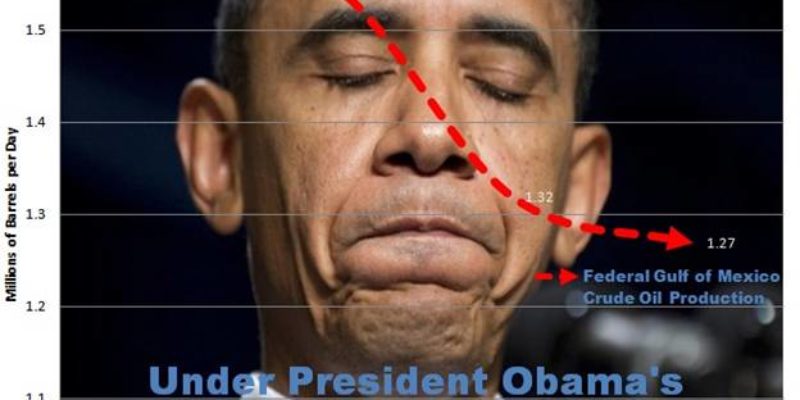From a release out of Rep. Steve Scalise’s office…
Congressman Steve Scalise today issued the following statement after a new Congressional Research Service report highlighted the impact of President Obama’s failed energy policies on oil and gas production on federal lands. According to the report, all increases in production from 2007 – 2012 took place on non-federal lands, outside the direct control of President Obama.
“For the last four years, Americans have been handcuffed to a radical and failed energy policy which has resulted in skyrocketing energy prices and increased dependency on Middle Eastern oil,” said Scalise. “This CRS report confirms what many Louisianans have long known – President Obama’s policies have led directly to fewer energy jobs, higher prices at the pump, and a prolonged permitting process for offshore energy exploration and production. Hardworking American families cannot afford to be handcuffed to President Obama’s failed energy policy for another four years. It’s time for the Obama Administration to work with Congress in a bipartisan way to create millions of American jobs, decrease our dependence on foreign oil, and lower gas prices at the pump.”
Key Findings of the Report:
- “All of the increased production from FY2007 to FY2012 took place on non-federal lands…”
- For natural gas production in the U.S. since 2007 “…production on federal lands (onshore and offshore) fell by about 33% and production on non-federal lands grew by 40%.”
- Because of declines in oil production on federal lands in FY2011 and FY2012, production is now below FY2007 production levels.
- The average daily production of natural gas on federal lands decreased by 19% from FY2011 to FY2012 and by 33% from FY2008 to FY2012.
- The average time to process an Application for Permits to Drill (APD) on federal land increased 41% from 2006 to 2011, from 218 days in 2006 to 307 in 2011.
- “A more efficient permitting process may be an added incentive for the industry to invest in developing federal resources, which may allow for some oil and gas to come onstream sooner, but in general, the regulatory framework for developing resources on federal lands will likely remain more involved and time-consuming than that on private land.”
That’s not all the report had to say. Here’s more from the House Natural Resources Committee…
These are the economic facts of increased offshore energy production that President Obama is ignoring:
Institute for Energy Research Study – released February 2013 – Opening access to federal lands that are currently closed off due to administrative action or lack of leasing could:
- Increase GDP by $127 billion annually for the next seven years, and $450 billion annually for the next thirty years with a cumulative 37-year increase in GDP of $14.4 trillion.
- Create 552,000 jobs over the next seven years, with almost 2 million jobs annually for the next thirty years.
- Lead to $32 billion in annual wage increases over the next seven years, with a cumulative $3.7 trillion increase over a 37 year cycle.
- Bring in $2.7 trillion more in tax revenues into the federal government over the next 37 years, while state and local tax revenues equal $1.1 trillion in the same time period.
Wood Mackenzie Study – released September 2011 – U.S. policies which encourage development of new and existing resources could:
- Create 1.4 million jobs.
- Increase domestic oil and natural gas production by over 10 million barrels per day.
- Raise over $800 billion of cumulative additional government revenue.
IHS CERA Study – released July 2011 – Taking proactive action in the Gulf of Mexico to increase the pace of plan and permit approvals for oil and gas resources could:
- Create 230,000 American jobs – nationwide (not just in the Gulf).
- Increase domestic oil production of more than 400,000 barrels of oil per day.
- Bring in nearly $12 billion in tax and royalty revenues to state and federal treasuries.
- Reduce amount the U.S. sends to foreign governments for imported oil by around $15 billion.
Advertisement
Advertisement


